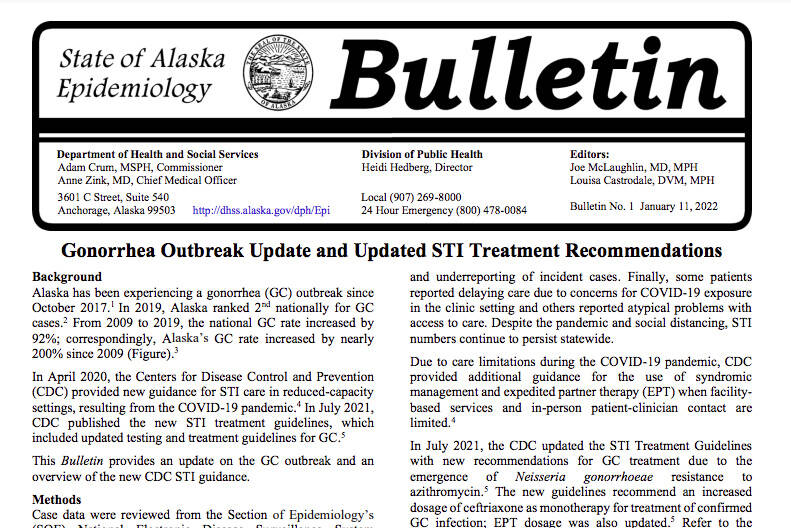Alaska saw a drop in cases of gonorrhea in 2020 from the previous year, according to the Alaska Section of Epidemiology, but the decrease may not truly reflect case numbers due to several factors.
The state has been experiencing an outbreak since 2017, and ranks higher than the nationwide average of gonorrhea cases, according to a release from the department.
From 2009 to 2019, cases have risen 200%, and Alaska ranked second nationally in 2019 for the highest number of reported infections, the state reported.
In April 2020, the Centers for Disease Control and Prevention released new guidance for sexually transmitted infections (STIs) in reduced-capacity settings because of the pandemic, and although gonorrhea case rates in Alaska were down 10% from 2019 to 2020, the Section of Epidemiology stated the data might be skewed.
“This decrease is greater than the nationwide trend but may not truly represent reduced infection burden for various reasons,” the release says. “The COVID-19 pandemic negatively impacted access to care and availability of care, which might have resulted in underdetection and underreporting of incident cases.”
In addition to logistical challenges posed by the pandemic, the Section of Epidemiology also reported that a “high burden” of syphilis cases in Alaska have likely contributed to the underdetection of gonorrhea.
Recommendations for testing and treatment outlined by the state department included multisite testing, follow-up appointments and re-testing three months after treatment, specific medication regimens, and education about STIs.
The full epidemiology bulletin on the gonorrhea can be found at https://dhss.alaska.gov/dph/Epi/pages/default.aspx.
Reach reporter Camille Botello at camille.botello@peninsulaclarion.com.


